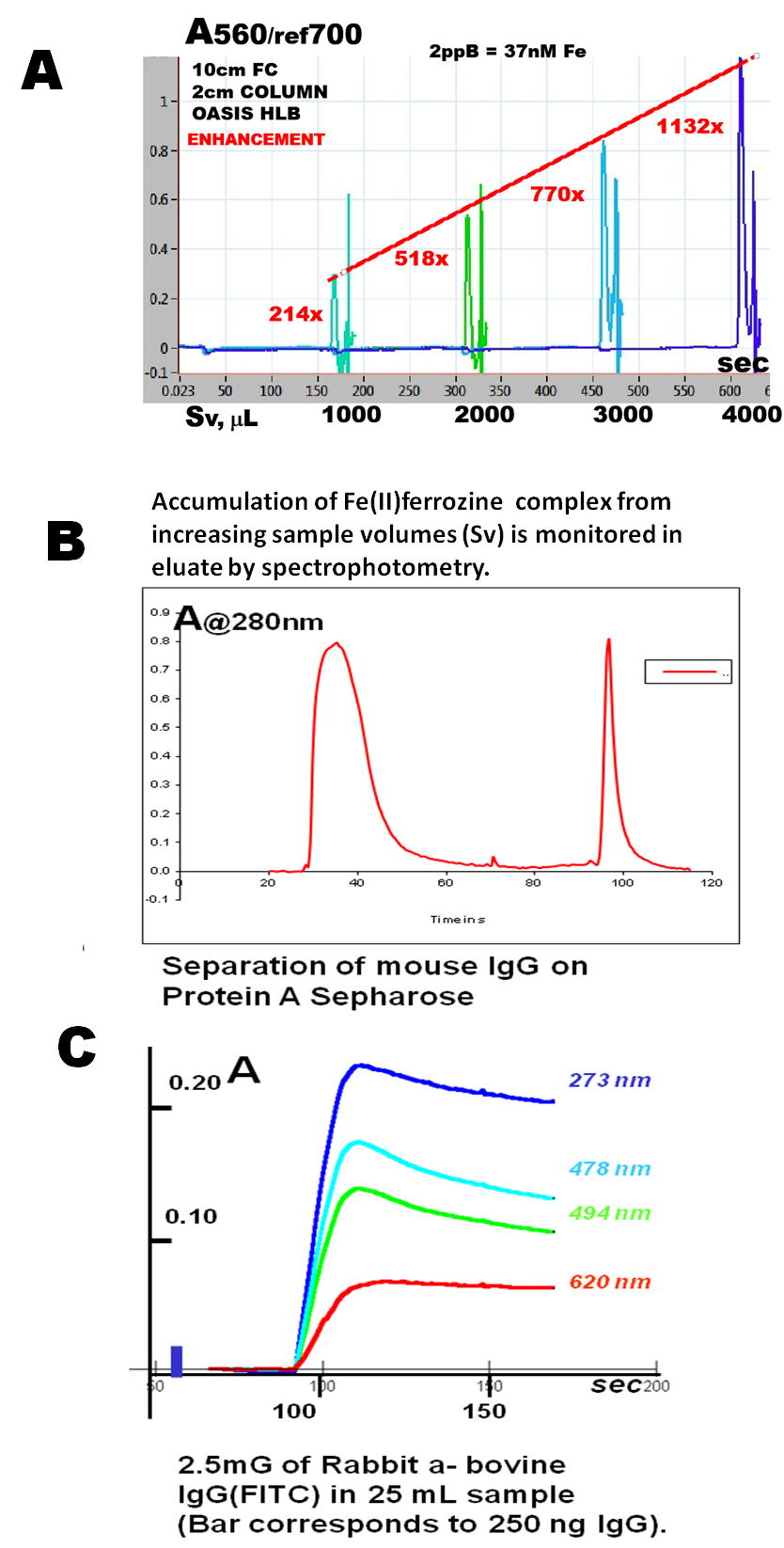The purpose of BI is to accumulate target analyte on bead surfaces, while the non retained matrix is being removed. The thus achieved analyte enrichment enhances selectivity and sensitivity of an assay and improves its limit of detection. BI has been applied to enhance the following techniques:
Why Bead Injection?
3.1.2.

Sorbent Extraction on Renewable Column.
Section 3.2.1.
SE method (A), uses programmable Flow Injection to accumulate traces of target analyte from a large sample volume on a microcolumn of a suitable sorbent. The analyte, complexed with a suitable reagent is eluted into a small volume of eluant and monitored by a detector situated in a close proximity of the microcolumn. Besides spectrophotometry, SE in BI format has been used to enhance fluorescence, chemiluminiscence, atomic absorption and mass spectrometry by removing matrix and accumulating the target analyte.
Renewable Column Affinity Chromatography.
Section 3.3.1.
Renewable Column Chromatography (B) is based on elution of target analyte from a micro column, formed by BI technique. Its advantage is that strongly retained analytes that can not be eluted can be removed by discarding the stationary phase. Combination of this technique with Bead Injection Spectrophotometry allows detection of both eluted and strongly retained analytes.
Bead Injection Spectrophotometry (BIS),
Section 3.4.1
BIS method (C) is based on real time monitoring of the target analyte as it is being accumulated on beads held within a flow cell.. In this example native (@273nm) and labeled (@475 & 494nm) proteins are monitored by spectrophotometry.









